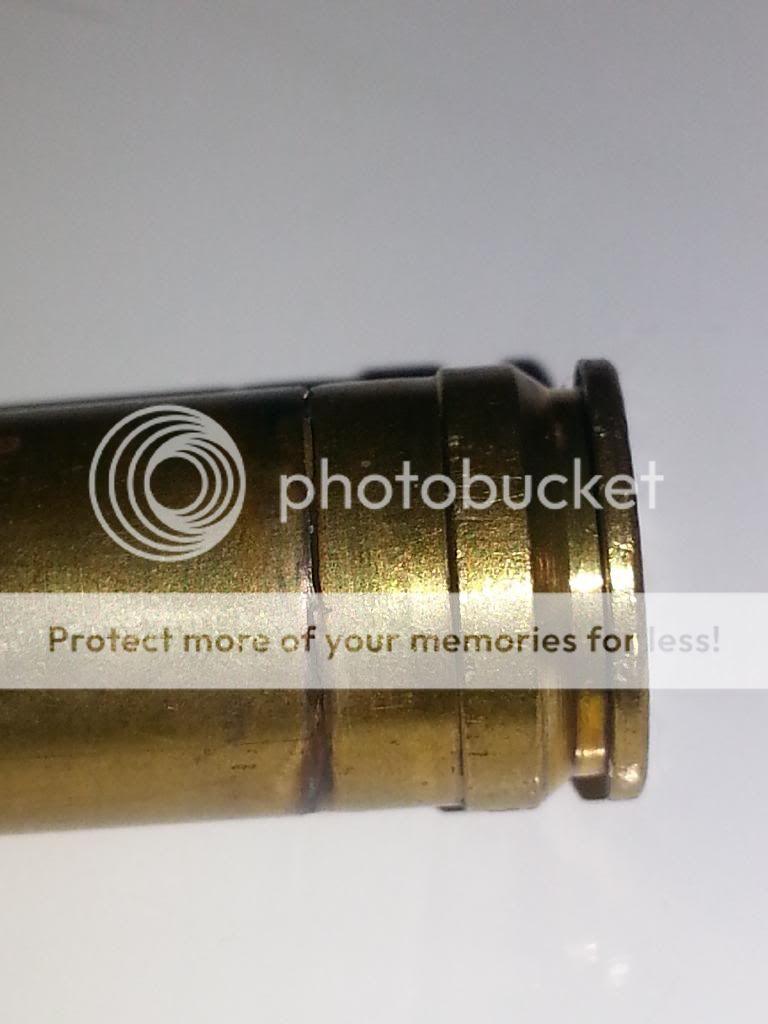bigedp51
Well-Known Member
- Joined
- Dec 10, 2010
- Messages
- 1,022
Below a factory loaded Winchester .303 British case fired once in a Enfield rifle. The Bolt would not close on a SAAMI NO-GO gauge, so the headspace was between .064 and .067. And maximum British military Enfield rifle headspace is .074.
The case stretched .009 on its first firing because it had a rim at minimum SAMMI thickness. Meaning excessive head clearance or air space between the base of the case and the bolt face.

Below with my RCBS case mastering gauge I can measure case wall thickness and and thinning. I think of it as my $100.00 bent paper clip but as you can see it measures in one thousandths of an inch.

My 1950 No.4 Enfield below has had the headspace adjusted from just kissing the rear of the case to .010 over maximum military headspace or .058 to .084. I did this to test the effects of headspace and head clearance and its effects on case stretching when fired.
Bottom line there is a reason why you are told to keep your shoulder bump to .001 to .002 and not stress the brass beyond its elastic limits. And a belted magnum case can stretch just like any other type case the first time it is fired. And the key word is head clearance and the distance the case is allowed to stretch when fired.

The case stretched .009 on its first firing because it had a rim at minimum SAMMI thickness. Meaning excessive head clearance or air space between the base of the case and the bolt face.

Below with my RCBS case mastering gauge I can measure case wall thickness and and thinning. I think of it as my $100.00 bent paper clip but as you can see it measures in one thousandths of an inch.

My 1950 No.4 Enfield below has had the headspace adjusted from just kissing the rear of the case to .010 over maximum military headspace or .058 to .084. I did this to test the effects of headspace and head clearance and its effects on case stretching when fired.
Bottom line there is a reason why you are told to keep your shoulder bump to .001 to .002 and not stress the brass beyond its elastic limits. And a belted magnum case can stretch just like any other type case the first time it is fired. And the key word is head clearance and the distance the case is allowed to stretch when fired.

Last edited:






